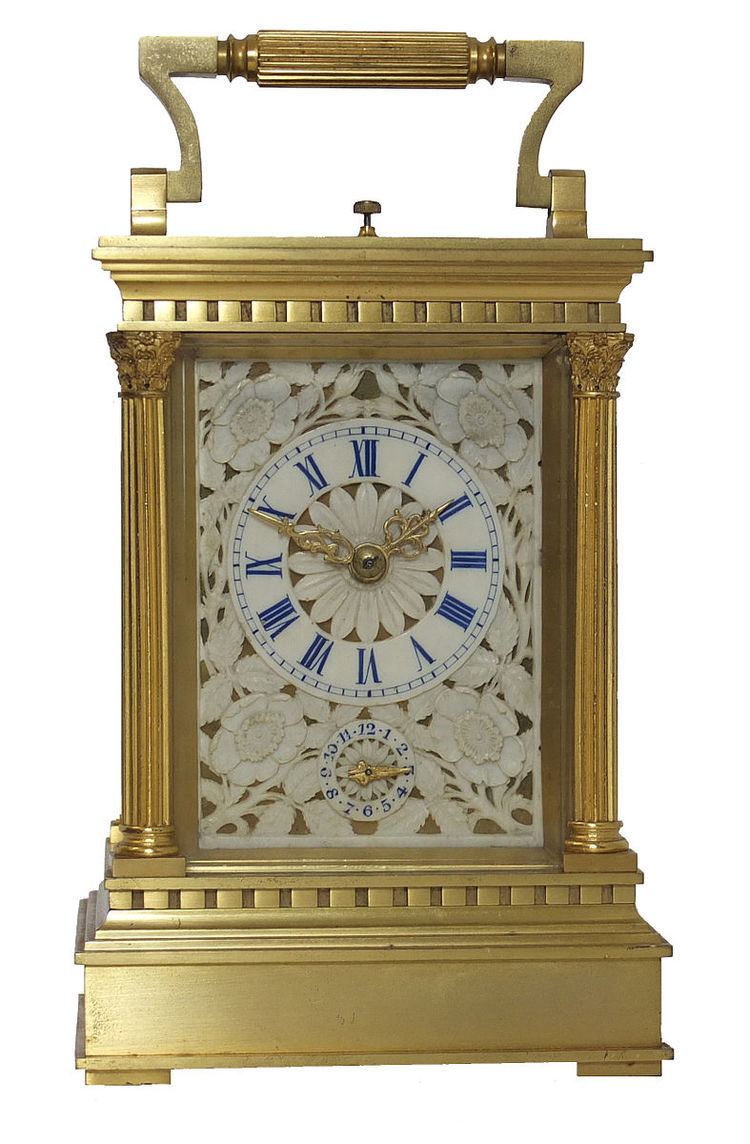 | ||
A carriage clock is a small, spring-driven clock, designed for travelling, developed in the early 19th century in France, where they were also known as "Officers' Clocks". The first carriage clock was invented by Abraham-Louis Breguet for the Emperor Napoleon in 1812. The case, usually plain or gilt-brass, is rectangular with a carrying handle and often set with glass or more rarely enamel or porcelain panels. A feature of carriage clocks is the platform escapement, sometimes visible through a glazed aperture on the top of the case. Carriage clocks use a balance and balance spring for timekeeping and replaced the larger pendulum bracket clock. The factory of Armand Couaillet, in Saint-Nicolas d'Aliermont (France) made thousands of carriage clocks between 1880 and 1920.
A carriage clock has in the past been a traditional gift from employers to retiring or long-serving staff. However, in modern times, with changing work patterns and changing desires, this is much less the case.
